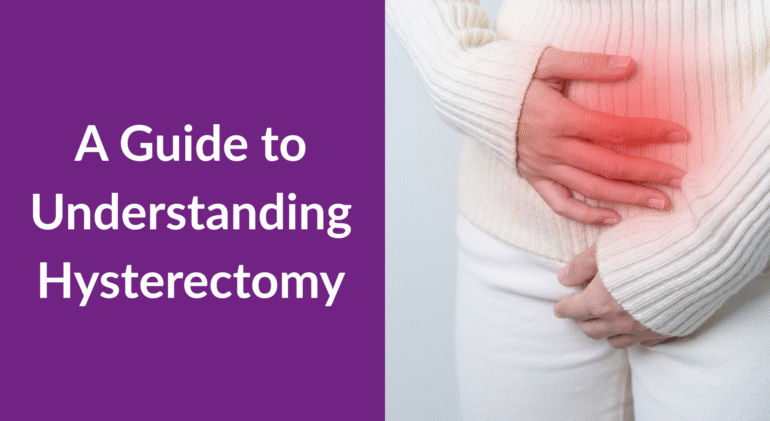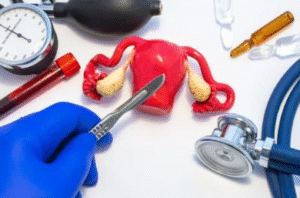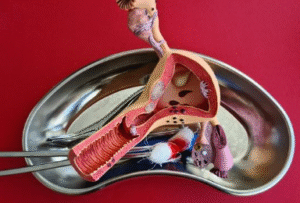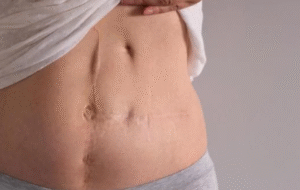
A Guide to Understanding Hysterectomy
A hysterectomy is a serious medical procedure where the uterus is removed from a woman in a surgical procedure. It is usually advised when all other treatment methods for gynecological ailments have failed to have any effect or if some conditions seriously jeopardize the well-being of a woman. Because ending the menstrual cycle and not being able to have children is the ultimate outcome of undergoing a hysterectomy, one needs to know about the procedure, the causes, and the recovery process.
A Guide to Understanding Hysterectomy
A hysterectomy is a type of surgery where the uterus is removed, and in some procedures, supporting female reproductive organs such as the cervix, ovaries, and fallopian tubes are also removed. It is often the remedy for various types of gynecological conditions from benign to cancers.
Types of Hysterectomy

There is more than one type of hysterectomy, each specific to a patient’s health needs:
- Total Hysterectomy: This is the most frequently performed type that removes both the cervix and uterus.
- Partial Supracervical Hysterectomy: Removes the uterus but leaves the cervix intact.
- Radical Hysterectomy: Commonly done to treat cancer, it entails the removal of the uterus, cervix, upper vagina, surrounding tissue, and even lymph nodes.
- Total Hysterectomy with Bilateral Salpingo-Oophorectomy: Removes the uterus, cervix, the fallopian tubes bilaterally, and the ovaries. This will induce immediate menopause if she has not already experienced it.
Reasons for Hysterectomy
- Uterine Fibroids: Benign growths resulting in pain, heavy bleeding, or pressure.
- Endometriosis: Tissue like the lining of the uterus develops outside the uterus, bringing about pain and issues with fertility.
- Adenomyosis: Endometrial tissue invades beyond the muscular wall of the uterus, resulting in massive bleeding and pain.
- Gynecologic Cancers: Uterine, ovarian, or cervical cancer usually requires the removal of reproductive organs.
- Chronic Pelvic Pain: When all else fails to relieve ongoing pelvic pain.
- Heavy or Abnormal Bleeding: Abnormally heavy bleeding during menstruation not controlled by medication or other fertility treatment.
Types of Hysterectomy Surgery

Surgeons choose the surgical procedure depending on the condition of the patient, his/her health status, and his/her preference:
- Abdominal Hysterectomy: This requires a bigger abdominal incision and is usually employed in the case of extensive disease or large uterus.
- Vaginal Hysterectomy: Removal of the uterus is done through the vagina without any abdominal incisions, resulting in quicker recovery.
- Laparoscopic Hysterectomy: Involves using small abdominal incisions along with a camera to help direct the procedure. It provides minimal scarring and faster recovery.
- Robotic-Assisted Laparoscopic Hysterectomy: A similar procedure to laparoscopic surgery, but using robotic technology to enable greater accuracy.
Recovery from Hysterectomy
- Abdominal Hysterectomy: Recovery is usually 6–8 weeks.
- Vaginal or Laparoscopic Hysterectomy: Recovery is typically within 2–4 weeks.
Patients are instructed to rest during recovery, not to lift any heavy items, and to avoid having sexual intercourse. Early ambulation and light exercise are encouraged to decrease the risk of blood clots.
Possible Side Effects and Complications

As with any serious procedure, hysterectomy has risks including:
- Infection
- Bleeding
- Damage to adjacent organs (bladder, bowel, ureter)
- Blood clots
- Early menopause if one’s ovaries are removed
- Psychological adjustment or emotional impact following surgery
Life After Hysterectomy
Post-surgery, both physical and emotional changes are seen in women. Their menstruation is ceased irreversibly, and if the ovaries have been removed, menopause will set in at once. Some feel emotional loss, whereas others feel relieved of ongoing pain or distress.
Sexual function usually is not affected or is actually enhanced, provided the hysterectomy removes pain-producing pelvic pathology. In some cases, immediate menopause may bring about vaginal dryness and decreased libido.
At Eva Fertility Clinic, we understand that a hysterectomy is a deeply personal decision. Whether you’re navigating chronic symptoms, preparing for cancer treatment, or seeking clarity on your options, our dedicated team is here to support you with empathy, expertise, and the latest in surgical care.
Visit evafertilityclinic.com to learn more or to schedule a personalized consultation today.






